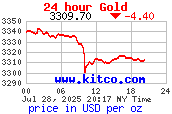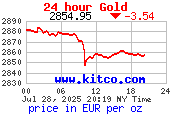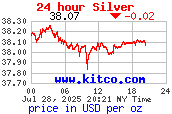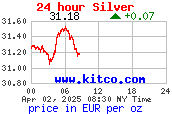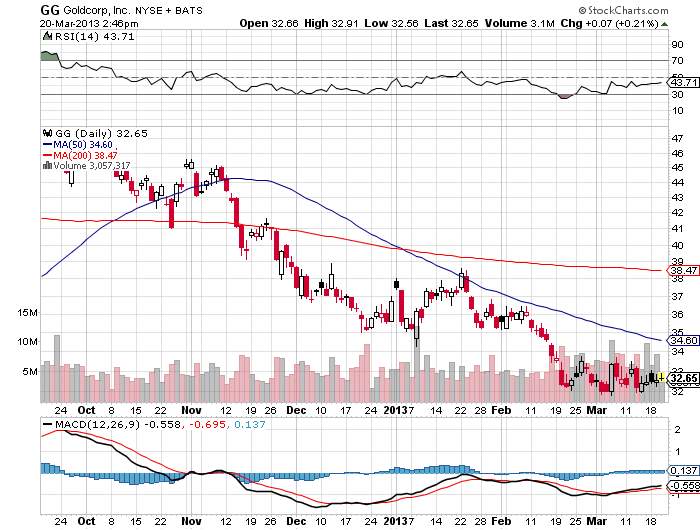Aureus Mining loses $5.8-million (U.S.) in 2012
2013-03-20 07:44 ET - News Release
Mr. David Reading reports
AUREUS MINING INC. - FINANCIAL RESULTS AND HIGHLIGHTS FOR YEAR ENDED DECEMBER 31, 2012 AND 2013 UPDATE
Aureus Mining Inc. has released its annual financial results for the year ended Dec. 31, 2012, and provided an update for 2013.
Financial highlights
Cash and cash equivalents of $79.4-million (U.S.);
Total assets of $153.1-million (U.S.);
Loss for the year of $5.8-million (U.S.).
Debt financing
Nedbank Capital and Rand Merchant Bank (RMB) have been mandated to arrange a project debt finance facility for New Liberty as separately announced today.
Project debt facilities are $108-million (U.S.) with overall cost of financing of about 0.5 per cent per year.
No gold hedging is contemplated.
Credit approval is expected in second quarter 2013.
New Liberty project highlights
Feasibility study showing a robust NPV (net present value) of $234-million (U.S.) and IRR (internal rate of return) of 37 per cent at an average gold price of $1,400 (U.S.) per ounce;
National Instrument 43-101-compliant proven and probable reserve estimate of 910,000 ounces (8.7 million tonnes grading 3.3 grams per tonne (g/t));
New Liberty to be the first commercial gold mine in Liberia producing plus 120,000 ounces per year at 3.7 g/t for the first five years; first gold pour scheduled for fourth quarter 2014;
Project optimization works nearing completion and include relocation of tailings storage and plant facilities and redesign of Marvoe Creek diversion channel;
Final metallurgical testwork on the New Liberty ore confirming gold recovery of 93 per cent, significant reduction in reagent consumption and CIL residence time now shortened to 24 hours (versus 48 hours previously);
All key permits in place following receipt of environmental permit in October, 2012;
Construction phase commencing in fourth quarter 2012 with early earthworks exploration highlights 9,000 metres of Weaju drilling campaign completed in first quarter 2013 with initial results showing high-grade intercepts as follows:
10 g/t over 7.5 metres from 0.2 metre;
6.6 g/t over nine metres from 114.4 metres;
4.6 g/t over 11.3 metres from 13.9 metres;
2.5 g/t over 19 metres from 24 metres;
3.7 g/t over 11 metres from 36 metres;
5.5 g/t over 6.6 metres from 12.9 metres;
3.8 g/t over nine metres from 78 metres;
3.2 g/t over nine metres from 180 metres;
4.7 g/t over 5.9 metres from surface;
5.1 g/t over 4.4 metres from 7.2 metres;
4.4 g/t over five metres from 79.8 metres.
The Weaju and New Liberty deposits demonstrate very similar geological settings and styles of mineralization. At Weaju soil surveys outline potential extensions which suggest that only half of the area has been drill tested.
Phased drilling programs have been completed at Leopard Rock, Ndablama and Gondoja and results continue to deliver high grades, including:
11.7 g/t over six metres;
14.8 g/t over three metres;
7.1 g/t over 11 metres;
7.6 g/t over 2.2 metres;
4.8 g/t over 3.3 metres.
Extensive soil survey has outlined a continuous zone of 13 kilometres of gold anomalies covering multiple target areas -- Leopard Rock, Ndablama and Gondoja.
Regional geochemistry and structural studies were initiated to generate new targets over the Liberian licence portfolio.
Generative early-stage field exploration work continues in Cameroon.
Corporate highlights
Transformation from an explorer to mine developer and growth company as New Liberty entered construction phase;
$80-million (U.S.) equity issue in November, 2012, to finance New Liberty.
Outlook -- key targets for 2013
Complete New Liberty project optimization studies;
Loan documentation for the debt component of the mine development expected to be finalized in third quarter 2013 with first drawdown of funds expected in fourth quarter 2013;
Complete the following New Liberty development milestones:
Marvoe Creek diversion channel;
Kinjor village relocation;
Plant earthworks.
Commence the following development activities:
Civil construction;
Tailings storage facility earthworks;
Order long lead items from April, 2013.
Exploration
Define new resources at Weaju and Ndablama;
Complete geochemical studies covering the total Liberian licence portfolio;
Generative study to define new targets in Liberian licence portfolio;
Completion of generative phase in Cameroon.
Commenting on the results, David Reading, president and chief executive officer of Aureus Mining, said: "Two thousand twelve saw Aureus achieve all of its goals -- a maiden reserve, a feasibility study which demonstrates the robustness of the New Liberty project, completion of the equity financing to build Liberia's first commercial gold mine and highlighting the next phase of exploration targets. The company has gained genuine momentum since its inception in 2011: from an exploration company, to a development company in 2012, and now having mandated banks for project financing Aureus will become a gold producer in 2014. The strategy of New Liberty being the first mine in our portfolio remains intact -- our near-mine exploration has added significant longevity to the life of mine at New Liberty, as well as exciting drilling results from Weaju, Ndablama and Leopard Rock, which underpins the significant future opportunities within our sizable licence area in Liberia.
"Not only do the Aureus assets benefit from grades significantly above most of its peer group in West Africa, we have a team which has built gold mines in the region, and now we have the support of not only our loyal shareholders but also high-quality, supportive banks, Nedbank and RMB, who share our vision of turning Liberia into West Africa's next prolific gold province.
"To have achieved so much in 2012 demonstrates the commitment, endeavour and support the company receives from its shareholders, board, management and employees. I would like to thank everyone for their hard work and I look forward to another exciting year in the growth of Aureus as one of West Africa's newest gold producers."
The financial statements and the accompanying management's discussion and analysis are available for review at the company's website as well as being available on SEDAR, and should be read in conjunction with this press release.
Aureus Mining will host a conference call on Wednesday, March 20, 2013, at 9 a.m. (London time) to update investors and analysts on its annual results. Participants may join the call by dialling one of the following numbers approximately 10 minutes before the start of the call:
From United Kingdom: (toll-free) 0-808-238-0673
From rest of world: 44-0-1452-569-335
Participant pass code: 23984125
A recording of the webcast will also be made available on the company's website later on the same day. A separate conference call will be held for Canadian analysts and investors at 1 p.m. Greenwich Mean Time/9 a.m. Eastern Standard Time.
From Canada: (toll-free) 1-866-4949-885
From rest of world: 44-0-1452-569-335
The participant pass code: 26203414
Qualified person
The estimates of mineral resources were calculated in accordance with NI 43-101 and carried out by Chris G. Arnold, BSc (honours), MSc, MAusIMM (CP), of independent consultants AMC. The reserve study was prepared by M. Staples of AMC, a qualified person, for the purposes of the study, under the standards set forth by National Instrument 43-101 standards of disclosure for mineral project, of the Canadian securities administrators.
http://www.stockwatch.com/News/Item.aspx?bid=Z-C%3aAUE-2050596&symbol=AUE®ion=C
[url=http://peketec.de/trading/viewtopic.php?p=1360946#1360946 schrieb:
Kostolanys Erbe schrieb am 12.03.2013, 21:36 Uhr[/url]"]Aureus Mining drills 7.5 m of 10 g/t Au at Weaju
2013-03-12 07:15 ET - News Release
Mr. David Reading reports
AUREUS MINING INC. - WEAJU DELIVERS HIGH GRADE INTERCEPTS FROM FIRST DRILLING PHASE
Aureus Mining Inc. has released the first results from a 62-hole diamond drilling program at the Weaju gold target. Weaju is located within the company's 100-per-cent-owned Bea Mountain mining licence in Liberia and is situated approximately 30 kilometres northeast of Aureus's flagship New Liberty gold project.
Highlights
Results have been received from 47 diamond drill holes (6,143 metres) which form part of a 62-hole (9,000-metre) program designed to test grade and geological continuity of a mineralized system at the Weaju gold target.
Results, which are mainly from shallow intercepts, include:
10 grams per tonne (g/t) over 7.5 metres from 0.2 metre;
6.6 g/t over nine metres from 114.4 metres;
4.6 g/t over 11.3 metres from 13.9 metres;
2.5 g/t over 19 metres from 24 metres;
3.7 g/t over 11 metres from 36 metres;
5.5 g/t over 6.6 metres from 12.9 metres;
3.8 g/t over nine metres from 78 metres;
3.2 g/t over nine metres from 180 metres;
4.7 g/t over 5.9 metres from surface;
5.1 g/t over 4.4 metres from 7.2 metres;
4.4 g/t over five metres from 79.8 metres.
The geological setting at Weaju is very similar to New Liberty.
Current and historic drilling has outlined the potential for approximately one kilometre of gold mineralization, which is open in all directions.
The Main and Ridge zones have a potential strike length of 600 metres.
The North zone has a potential strike length of 400 metres.
The project has a strong southwest-directed plunge of 45 degrees to the mineralization, controlling the orientation of the high-grade pay shoots.
The project has the potential to increase total strike to two kilometres by extensions indicated by detailed soil surveying. Pitting and trenching are under way to define targets for drill testing in this additional strike length.
Assay results for the remaining 15 holes of the 9,000-metre program are expected in April. These results cover the area between the Ridge and Main zones and the deeper extensions of the North zone and the Creek zone.
Resource potential and phase 2 drilling will be assessed once all results have been received. Metallurgical sampling is currently in progress.
Commenting on the Weaju results, David Reading, president and chief executive officer of Aureus Mining, said: "The Weaju drilling and soil sampling results highlight the potential for a large mineralized system covering a two-kilometre strike length. Drilling results to date are very positive and include a number of high-grade, near-surface intercepts. Further work is required to define the potential size, grade and geometry of this deposit. The possibility of a stand-alone mine or trucking high-grade material from Weaju to New Liberty will be investigated."
Diamond drilling programs at Weaju have outlined mineralized zones with a cumulative strike potential of one kilometre.
The Weaju gold target is located under 30 kilometres northeast of the New Liberty gold deposit within the company's Bea Mountain mining licence of 457 square kilometres. Previously, 48 diamond drill holes were drilled at Weaju by former licence holder Mano River during the period 2000 to 2005. Weaju has been subjected to intense artisanal mining activity and in July, 2012, the company announced the settlement of a legacy mining claims issue with a local Liberian company, Weaju Hill Mining Corp. In November, 2012, the company commenced exploration activities at Weaju involving an LIDAR survey, geological mapping, soil geochemistry for gold and a diamond drilling program. At the end of February, 2013, the company had completed a phase one drilling program of 62 holes for approximately 9,000 metres. To date, results have been received for 47 holes from this program.
The geology at the Weaju target consists of a sequence of ultramafic and mafic rocks which have been intruded by various generations of granite and pegmatite. This package of rocks has been subjected to shearing and folding which led to the gold mineralization event. Gold is associated with disseminated sulphides and intense hydrothermal alteration involving silicification and the introduction of phlogopite and sericite. The structure, alteration and mineralization at Weaju are very similar in style to that developed at New Liberty which is located less than 30 kilometres to the southwest, suggesting that both deposits are genetically related.
The gold mineralization occurs on both north and south limbs of an asymmetrical synform (North and Main zones) and within the fold closure (Creek and Ridge zones). The North zone dips steeply at 70 degrees to the south-southwest and the Main zone dips steeply at 60 degrees to the north-northwest. The phase one exploration drilling program at Weaju was designed to confirm the geological model developed from the historic drilling and to test the continuity of mineralization in the four zones.
Drilling has outlined multiple gold intercepts within the four zones and all results from the first 47 holes are presented in the associated table.
WEAJU DRILL HOLE RESULTS
Hole ID From (m) To (m) Intersection length (m) Au grade (g/t)
WJD0049 16.0 19.0 3.0 5.8
and 24.0 43.0 19.0 2.5
WJD0050 3.0 4.0 1.0 3.7
and 33.0 35.0 2.0 1.0
and 64.0 65.0 1.0 2.0
WJD0051 33.0 35.0 2.0 0.5
WJD0057 1.4 10.0 8.6 1.3
and 111.5 112.5 1.0 6.5
WJD0058 4.5 10.3 5.8 1.3
and 93.0 99.0 6.0 1.6
including 93.0 94.0 1.0 4.6
WJD0059 12.9 19.5 6.6 5.5
WJD0060 52.0 54.0 2.0 0.5
WJD0065 107.0 113.0 6.0 1.4
WJD0081 0.2 7.7 7.5 10.0
and 33.6 37.6 4.0 12.7
and 43.6 52.2 8.6 3.5
WJD0082 84.6 87.6 3.0 0.9
and 122.6 125.6 3.0 0.5
WJD0083 87.7 89.7 2.0 2.3
and 106.7 109.7 3.0 0.4
and 116.7 117.7 1.0 9.1
WJD0084 114.4 123.4 9.0 6.6
WJD0085 41.5 42.5 1.0 11.0
and 61.5 63.5 2.0 1.4
and 73.5 75.5 2.0 1.7
and 77.5 79.5 2.0 2.1
and 85.5 90.5 5.0 0.4
and 94.5 99.5 5.0 0.5
and 102.5 104.5 2.0 0.9
and 133.5 134.5 1.0 4.8
WJD0053 36.0 47.0 11.0 3.7
including 41.0 46.0 5.0 8.0
WJD0054 23.2 27.8 4.6 2.5
WJD0055 78.0 87.0 9.0 3.8
WJD0056 97.0 105.0 8.0 1.0
and 108.0 111.0 3.0 1.8
WJD0062 155.0 157.0 2.0 2.0
and 169.0 174.0 5.0 1.0
and 180.0 189.0 9.0 3.2
WJD0068 63.0 68.0 5.0 5.7
WJD0069 6.0 10.0 4.0 5.0
and 15.0 17.5 2.5 1.2
WJD0070 78.0 82.0 4.0 1.0
WJD0072 13.9 25.2 11.3 4.6
WJD0073 0.9 8.3 7.4 1.9
and 18.2 23.0 4.8 0.5
WJD0074 4.6 12.4 7.8 0.9
including 9.4 12.4 3.0 1.2
and 42.0 48.0 6.0 1.1
and 50.0 58.0 8.0 1.5
WJD0075 44.2 47.2 3.0 2.3
and 80.6 91.6 11.0 0.5
WJD0078 28.9 33.1 4.2 1.6
and 63.1 64.1 1.0 2.6
WJD0079 15.3 32.8 17.5 1.3
and 42.8 47.8 5.0 2.4
WJD0086 28.9 32.8 3.9 0.9
and 63.8 64.8 1.0 2.8
and 79.8 84.8 5.0 4.4
and 86.8 87.8 1.0 2.3
and 90.8 94.8 4.0 1.3
and 106.8 107.8 1.0 5.2
WJD0087 86.9 87.9 1.0 5.9
and 95.9 97.9 2.0 0.9
and 103.9 105.9 2.0 1.2
WJD0088 51.5 52.5 1.0 1.6
and 64.7 66.7 2.0 1.1
and 82.7 83.7 1.0 2.8
WJD0089 126.2 127.2 1.0 3.2
and 140.2 143.2 3.0 0.9
and 152.2 157.2 5.0 2.3
WJD0090 9.4 10.7 1.3 1.4
and 19.9 21.1 1.2 4.5
and 24.1 26.1 2.0 0.5
WJD0092 15.9 19.6 3.7 0.6
WJD0093 25.8 30.9 5.1 0.5
51.6 52.6 1.0 1.2
WJD0096 121.8 129.8 8.0 1.0
WJD0061 28.0 29.0 1.0 1.6
and 40.0 41.0 1.0 4.5
WJD0063 0.0 3.0 3.0 1.2
and 6.5 9.5 3.0 1.3
WJD0064 7.2 11.6 4.4 5.1
and 41.0 56.0 15.0 1.3
including 41.0 46.0 5.0 3.2
WJD0066 9.0 16.0 7.0 3.0
including 12.0 16.0 4.0 4.8
WJD0067 95.4 96.4 1.0 1.6
WJD0077 6.0 8.0 2.0 0.4
WJD0080 0.0 7.1 7.1 0.8
WJD0095 0.0 5.9 5.9 4.7
and 17.9 20.9 3.0 0.5
and 43.7 46.7 3.0 4.4
and 51.7 53.7 2.0 1.3
Comprehensive QA (quality assurance) and QC (quality control) procedures and protocols were undertaken on all sampling and assaying. Due to the presence of both coarse and fine gold a proportion of the drill samples were prepared and reanalyzed using screen fire assay and gravimetric finish. The correlation between standard fire assay methods and screened methods was good and confirmed the efficacy of the standard fire assay method for this material and the accuracy and repeatability of the results.
Shallow drilling within the oxide zones often encountered difficult ground conditions and high water inflows which resulted in significant core losses. Approximately 1,000 metres of drilling covering the oxide zones of 14 holes will be repeated in the near future with more advanced drilling technology to ensure better recoveries.
Over all, the drilling results confirm the presence of the North, Main and Ridge zones and suggest a potential cumulative strike of mineralized rock of over one kilometre.
The North zone has been defined with an east-to-west strike continuity of 400 metres and has been drilled down to a depth of 150 metres. It is still open in all directions. Gold intercepts vary in width from one to 18 metres and many holes have multiple intercepts. Higher-grade zones are controlled by a 45-degree plunge to the southwest. Results are still pending from five diamond holes drilled to test depth extensions in the North zone.
Drilling in the Main zone highlights a complex geometry controlled by tight folding which plunges to the west. Mineralized bodies can be traced over a northeast-southwest strike of 200 metres and widths of between one and 19 metres.
The best Main zone grades are located within the shallow oxidized horizon and further drilling is required to trace the higher-grade shoots at depth as structural studies indicate that mineralization plunges to the west and therefore downdip extensions must take cognizance of this structural control.
The Ridge zone has a strike continuity of about 150 metres in a northeast-southwest direction and can be traced down to 80 metres in vertical depth. Results are still pending for three holes from this zone.
Results from holes WJD0083 to 85 suggest the Main zone can be linked to the Ridge zone and this would outline a total potential mineralized strike length of about 600 metres from the northernmost Ridge zone to the southernmost Main zone intersections. Results are still pending for three diamond holes drilled within the gap area between the Main and Ridge zones.
The Creek zone is still poorly understood in terms of geology and grade geometry and results of three holes are still pending from this area.
Some very high historic grades were encountered in shallow oxide material for six of the first 14 historic holes drilled into the Main and North zones in 2000 by Mano River Resources (WJD0001 returned 24 metres grading 33 g/t, WJD0002 returned 22 metres at 4.5 g/t, WJD0005 returned 34 metres at 19.9 g/t, WJD0007 returned four metres at 15.1 g/t, WJD0009 returned 18 metres at 4.5 g/t and WJD0013 returned 12 metres at 10 g/t). Due to extensive pitting and excavating undertaken by artisanal miners since that time a portion of this shallow material has been removed. The exact location of these holes is therefore not known but, where possible, approximate positions have been identified and twin drilling has outlined the same mineralized intervals in holes WJD0049, WJD0081 and WJD0054. Grade differences are attributed to either loss from artisanal mining of a portion of the material or core loss from the current drilling program. Surface trenching is being undertaken to understand grades in these areas and oxide drilling is to be repeated in 14 holes from the current program.
In summary, work to date has confirmed the mineralized systems at the North, Main and Ridge zones. Continuity of mineralization along strike and downdip is well defined in the North zone. In the Ridge and Main zones geological and structural modelling indicates that gold mineralization is controlled by shallow pay shoots which plunge to the southwest. Drilling in the gap between the Main and Ridge zones also highlights the potential for this plunging gold system to extend over at least 600 metres in a northeast-to-southwest direction. The current 62-hole drilling program is not yet complete and results are still pending from 15 holes.
Once all results have been received and repeat oxide drilling has been completed then geological and grade modelling will be undertaken to assess the resource potential of the Weaju target. A metallurgical sampling program is currently in progress to assess the amenability of this material to conventional CIL and gravity metallurgical recovery.
Soil sampling programs for gold outline potential eastern and southwestern extensions to the Weaju target.
The company has completed soil sampling for gold within a 2.8-square-kilometre area surrounding the Weaju target. Gridding was on a line spacing of 100 metres with samples taken at 25-metre intervals on each line, with 1,029 samples analyzed. Results from this work has outlined a 600-metre southwest extension to the Main zone as defined by anomalous gold-in-soil values ranging between 100 parts per billion (ppb) and 1.2 g/t gold. An eastward extension of 200 metres has also been outlined in the fold nose area (Creek and Ridge zones) at similar levels of anomalism. Finally a potential westward extension to the North zone has been identified on two soil lines. The soil results have been successful in outlining the potential size of the Weaju gold project which covers potentially double the area that has been drill tested.
All of the gold-in-soil anomalies are currently the subject of follow-up pitting and trenching programs in order to define targets for drill testing.
http://www.stockwatch.com/News/Item.aspx?bid=Z-C%3aAUE-2048048&symbol=AUE®ion=C

